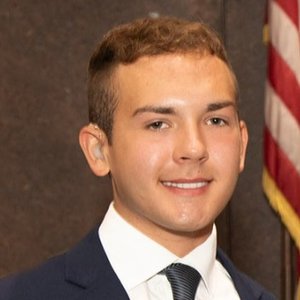The Farm Bill includes vital programs to support our farmers and their land. This is particularly important considering agriculture generated around $3.3 billion in GDP and $1 billion in wages in the state in 2021.…
agriculture
THE PARTIAL OBSERVER Farmland Protection is Everyone’s Concern New York is an agricultural powerhouse, you may be surprised to learn. The state ranks in the top 10 nationally in no fewer than 14 crop and value-added agricultural products: number one in yogurt, number two in apples and cabbage, top 10 in tomatoes and potatoes, to name a few. Forty-three percent of New York’s wine grapes go to California for their wine industry. This productivity is all the more amazing when…
News in Brief February 16, 2023 Otesaga Golf Season Extended To March 31COOPERSTOWNThose who think that golf is just a summer hobby should hang on to their clubs and get ready to sharpen their skills this winter. The Otesaga Resort Hotel is introducing a state-of-the-art TrackMan indoor golf simulator at its Leatherstocking Golf Course Clubhouse, allowing participants to “play” the resort’s famed course in a whole new way now through March 31.Golfers can choose from more than 200 golf courses…
HAPPENIN’ OTSEGO for THURSDAY, FEBRUARY 9 Discuss Local Cat Population With Susquehanna SPCA COMMUNITY CAT FORUM—4 p.m. The community is invited to join local animal shelters and experts to discuss how we can help cats in need and steps to mitigate overpopulation. Held at the Foothills Performing Arts and Civic Center, Oneonta. Visit facebook.com/SQSPCA/ BLOOD DRIVE—1-6 p.m. Save up to three lives with the American Red Cross. Quality Inn, 5206 State Highway 23, Oneonta. Register at redcrossblood.org…
Farmland Runoff, Intense Storms Raise Phosphorus Loads That Drive HABs in Seneca-Keuka Watershed, 9E Study Finds By PETER MANTIUS Originally published in October in “Water Front,” an online blog by Peter Mantius, this article is being reprinted with permission from Mantius because of its relevance to issues currently threatening water bodies statewide, including challenges to keeping our freshwater resources clean and climate-caused threats. GENEVA, NY – A comprehensive plan to cut phosphorus pollution in the Seneca-Keuka Watershed won final state…
Editorial Noble Barns The Swart-Wilcox House, the oldest in Oneonta, is looking for a 19th-century English barn to replace the original one destroyed by fire in 1968. Upstate New York is rural. Its towns, villages, and cities are spread out and difficult to reach. There are fields and forests and lakes. For most of its over-200-year history agriculture has been, and still might be, the main industry. Upstate New York is beautiful, bucolic, serene, clear, compelling. Rolling hills encircle cool…
Editorial In Honor of Rural Women This Saturday, October 15, the world will recognize, as it does every year, the importance of the contributions of rural women and girls, including indigenous women, who live and work in remote and rural, often poverty-stricken, communities of the world. These strong women and girls play a key role in enhancing agricultural development, managing natural resources, adopting climate-resilient agricultural approaches, and planning against malnutrition and food insecurity. The International Day of Rural Women was…
Home, Home on the Range. Where the Deer and the Heifers Play? Kathleen Peters Upstate New Yorkers are used to seeing livestock every day and almost everywhere. Even amid the economic crisis in local agriculture, the Leatherstocking region is rich in farms and farm animals. Take a 10-minute drive in any direction from Cooperstown or Oneonta and you will encounter horses, dairy cattle, beefers, sheep, goats, hogs, llamas, alpacas, and more, usually idling peacefully within the fences, barns, and pastures…
News from the Noteworthy Much Ado About Methane Our column, The Life of the Land, is an exploration of local agricultural practices. Several of our pieces will focus on farms which raise grass-fed animals; here we address the environmental implications of locally raised livestock. It is indisputable that industrial livestock management is an ecological disaster. This has led to pronouncements from numerous authoritative agencies to eat “less meat” or even “no meat”. Yet grass-fed production of livestock is an important…
News from the Noteworthy Land Use, Energy and the Economic Future of Upstate New York Climate change and land use are inextricably bound together. The collision between the two creates tension. We are experiencing that tension in multiple ways — not least of which is the drive to create more renewable energy through use of solar and wind-power generation on central New York farmland. There currently are proposals — some approved and some being considered — to develop large solar…


